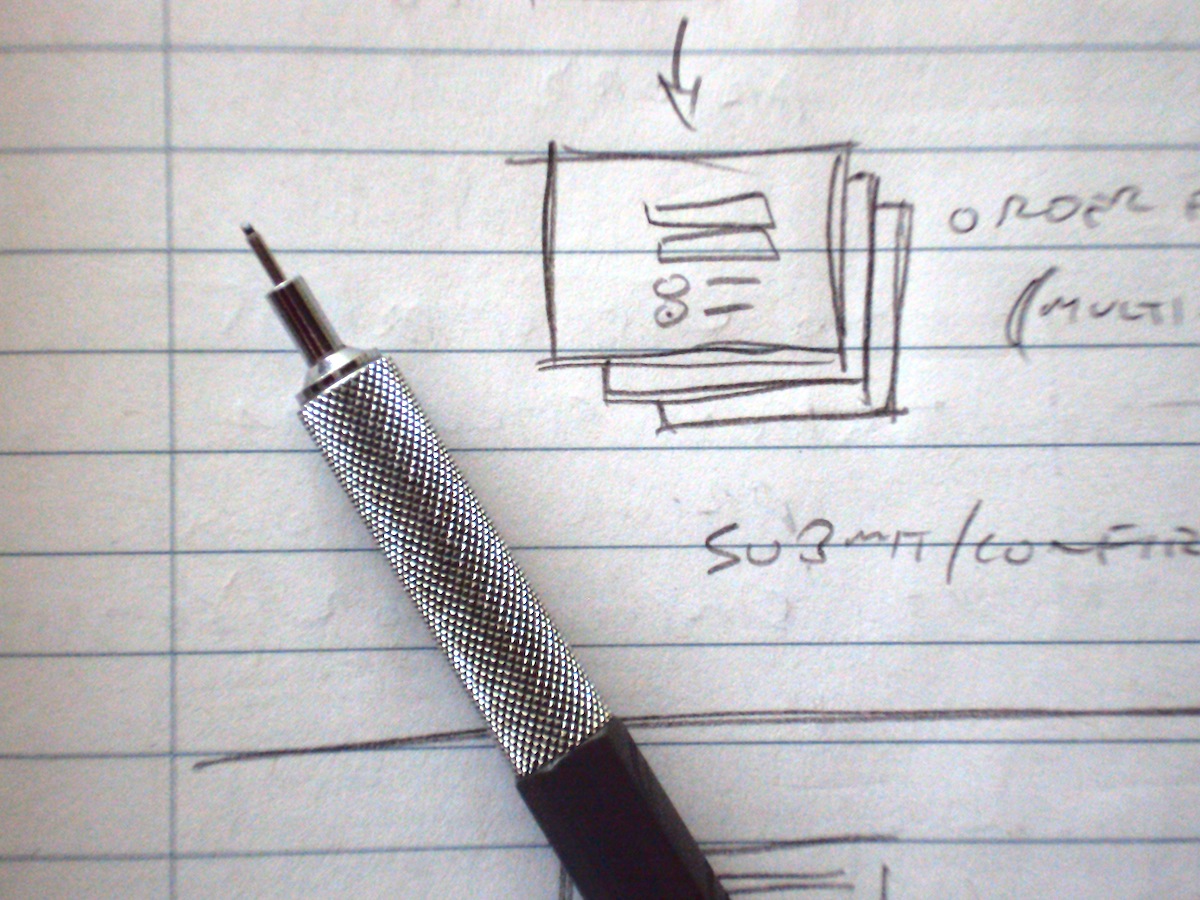On Friday I visited the REAP Felt Lab to talk with a group of people about design artifacts.
It was a bit of an overview of some of the things used to communicate a design to the various stakeholders in a product development project. As time was limited, the focus was on representations of the user interface. That is, while they’re important, we didn’t get into such useful research artifacts as personas or scenarios or journey maps.
We did cover such obvious candidates as wireframes and prototypes in various levels of fidelity, exploring the different forms that they can take, and their strengths and weaknesses in different contexts. We also looked at sketches, which might have a more limited audience — maybe even just the designer in some cases — but which are something that I use on every design project. (As an aside, I’ve written before about pencils and how regularly I use them for sketching and more.)
The discussion was lively and the group was an engaging one. I always find it much more interesting to hear what other folks have to say, and welcomed the thoughts that everyone shared. My thanks to REAP for inviting me!

